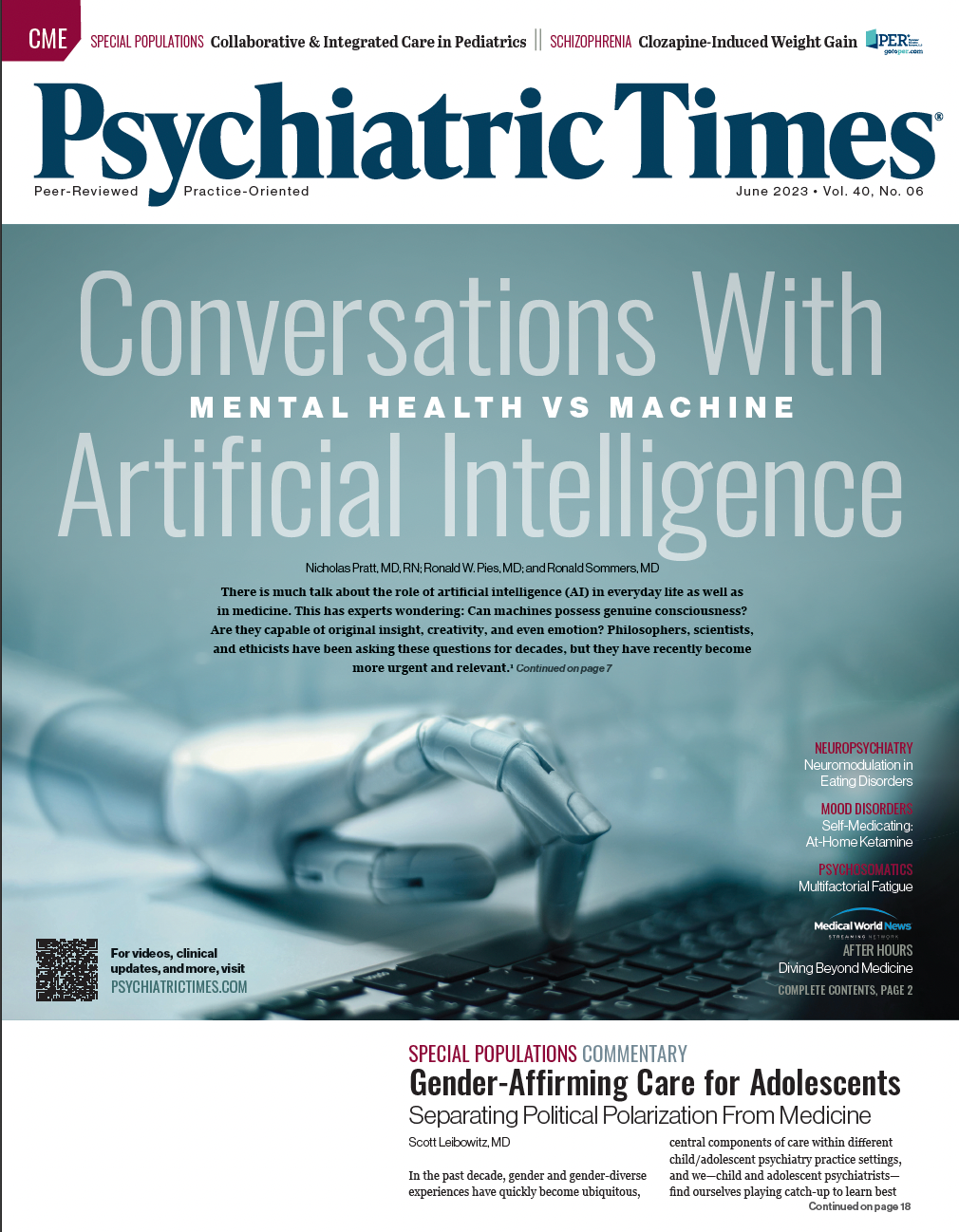Publication
Article
Psychiatric Times
Neuromodulation in Anorexia Nervosa and Bulimia
Author(s):
How can procedures like repetitive transcranial magnetic stimulation and deep brain stimulation help in the treatment of eating disorders?
Good Studio_AdobeStock

The eating disorders anorexia nervosa (AN) and bulimia nervosa (BN) are serious medical illnesses. AN has one of the highest mortality rates of any psychiatric illness, and high rates of development of chronic, treatment-resistant illness. BN has a lower, but meaningful mortality rate and can also become chronic.
Although there are gold standard treatments for BN that produce remissions in approximately two-thirds of patients, many do not respond to these standard treatments. The situation for AN is much bleaker, with perhaps only 50% making an eventual recovery. There has been little progress in the development of new treatments in either condition for several decades.
Neuromodulation refers to treatments that attempt to directly affect brain circuitry function. Two such treatments are repetitive transcranial magnetic stimulation (rTMS) and deep brain stimulation (DBS). With rTMS, a magnetic field is applied from outside the skull to a target within the brain to either increase or decrease the activity of specific brain circuits. It has been used in the treatment of depression for several decades.
Although the dorsolateral prefrontal cortex (DLPFC) has been the traditional target, more recent technical developments have allowed for the targeting of deeper structures, such as the dorsomedial prefrontal cortex (DMPFC). Both areas are involved in executive function and in the processing of emotions generated in the deeper structures of the brain, such as the striatum.
DBS has been used for decades in the treatment of movement disorders such as Parkinson disease, and more recently in a variety of psychiatric disorders including depression, obsessive compulsive disorder, and alcoholism. The mechanism of action of DBS is unknown.
Another critical advance has been the development of functional magnetic resonance imaging, which allows for the direct visualization of brain circuitry function at rest or in response to an intervention.
There is limited literature describing the use of these techniques in AN or BN. For rTMS, one open pilot study of 30 participants with bingeing and purging at a normal or low weight showed a greater than 50% reduction in bingeing and purging in about 60% of those receiving 20 to 30 rTMS treatments targeting the DMPFC.1
This response was correlated to reduced levels of pretreatment connectivity between the striatum and the DMPFC. Interestingly, about 20% of participants experienced transient worsening of their symptoms, this being correlated to higher levels of pretreatment connectivity between the same 2 areas.
There is 1 substantial trial of rTMS in AN.2 In this trial, participants were offered live versus sham rTMS delivered to the DLPFC. After 20 sessions delivered over 4 weeks, there were small changes in eating disorder symptoms and larger changes in mood in participants receiving live rTMS.
There is also limited literature on the use of DBS in AN. All trials to date have enrolled individuals with chronic, treatment-resistant AN who were viewed as being at high risk of a premature death. The largest trial to date is an open-label trial that enrolled 22 participants who received stimulation of the subgenual cingulate.3
At 1-year follow-up, there were significant increases in weight, and significant decreases in eating disorder, depressive, and anxiety symptoms. At 3 to 5 years’ follow-up of 15 participants, 20% were fully weight restored and a further 20% no longer met the weight criteria for AN. Two of the 15 participants had died, emphasizing the severity of the illness among participants enrolled in the trial.
A second trial enrolled 7 participants who received stimulation to the nucleus accumbens.4 At 1 year, although there were significant reductions in eating disorder and other psychiatric symptoms, there was no change in body mass index (BMI).
Finally, a third trial assigned 8 participants to receive either subgenual cingulate or nucleus accumbens stimulation, depending on their comorbidity status, with participants exhibiting depressive symptoms receiving subgenual cingulate stimulation and those with prominent anxiety symptoms receiving nucleus accumbens stimulation.5
The trial design included crossover at 6 months; however, the article in question only reports on the initial 6-month period of the trial. Five of 8 participants experienced a greater than 10% increase in BMI over the course of the 6 months, and there were significant improvements in other psychiatric symptoms over the course of 6 months. BMI increases were not broken out by location of stimulation.
The results of all these trials suggest that further investigating neuromodulatory treatments for AN and BN could provide benefit to some patients. The use of rTMS in BN requires replication with a double-blind, placebo-controlled trial: One such trial was underway prior to the pandemic, but had to be abandoned.
For AN, the development of novel rTMS protocols or targets might prove to be helpful. DBS of the subgenual cingulate appears to help a subgroup of patients; although the rates of improvement may seem modest, it must be remembered that these are individuals who have exhausted all other treatment options. Ideally, a suite of neuromodulatory interventions would be available, ranging from less to more invasive, offering patients multiple options.
Dr Woodside is a professor in the Department of Psychiatry at the University of Toronto in Canada.
References
1. Dunlop K, Woodside B, Lam E, et al. Increases in frontostriatal connectivity are associated with response to dorsomedial repetitive transcranial magnetic stimulation in refractory binge/purge behaviors. Neuroimage Clin. 2015;8:611-618.
2. Dalton B, Bartholdy S, McClelland J, et al. Randomised controlled feasibility trial of real versus sham repetitive transcranial magnetic stimulation treatment in adults with severe and enduring anorexia nervosa: the TIARA study. BMJ Open. 2018;8(7):e021531.
3. Lipsman N, Lam E, Volpini M, et al. Deep brain stimulation of the subcallosal cingulate for treatment-refractory anorexia nervosa: 1 year follow-up of an open-label trial. Lancet Psychiatry. 2017;4(4):285-294.
4. Scaife JC, Eraifej J, Green AL, et al. Deep brain stimulation of the nucleus accumbens in severe enduring anorexia nervosa: a pilot study. Front Behav Neurosci. 2022;16:842184.
5. Villalba Martínez G, Justicia A, Salgado P, et al. A randomized trial of deep brain stimulation to the subcallosal cingulate and nucleus accumbens in patients with treatment-refractory, chronic, and severe anorexia nervosa: initial results at 6 months of follow up. J Clin Med. 2020;9(6):1946.







